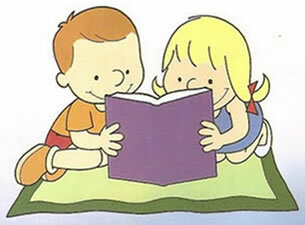The teacher or teacher asked you to write a narration and you got a little lost? Calm down, it doesn't have to be like this, narration is a very popular textual type, certainly the first to enter our lives, after all, all child loves fairy tales and stories filled with characters and events, elements capable of transporting us to the incredible universe of literature.
To help you create a very interesting story, one that surprises and leaves the reader interested to the last line, Escola Kids prepared some tips on how to write a good text narrative. Just follow the step by step and start making up real or imagined stories, that's up to you. Enjoy the writing and good reading tips!
Tips for writing narrative text:
1. What is a narrative text? The narrative writing is the textual type which is based on an arrangement of sequence of actions, that is, an arrangement of the facts in which the characters in the plot are involved. These actions are developed in a determined time and space, following a predetermined textual structure;
2. What does it take to write a good narrative text? To develop a good narrative text, it is very important to know how to build the characters, after all, they are the “face” of the narration. In order for the reader to be interested in them, it is essential that you create interesting types not only in physical aspects, but also in aspects psychological, since this type of characteristic interests the reader more than knowing that a certain character is redhead, brunette, tall, fat etc. Also, place your reader in time and space, allow him to feel that your story is possible, even if it is a fictional story;
3. Pay attention to the structure of the narrative text, which is as follows:
▪ Presentation/Introduction;
▪ Conflicts/Development;
▪ Climax/Apice of the story;
▪ Completion/Finish.
The three basic elements of narration are introduction, development, and conclusion. In the presentation or introduction, you must present the characters, as well as their physical and psychological characteristics, and place the reader in the time and space of the narrative. In development, you will present the conflicts, that is, the different situations in which the characters will be involved. These situations will move towards the apex, or climax, which is the exact moment when you will, finally, hook the reader. At the end we will have the outcome for these conflicts, at which time you will be able to show solutions (or not) to the characters' problems;
4. Choose a narrator type, which can be of three different types:
Narrator-character: This type of narrator participates in the story he tells and, in this way, assumes two roles, character and narrator. Here the story is always told in the 1st person;
Observer-narrator: It is the one who observes, does not participate in the story and does not interfere with the facts. Your only mission is to narrate in 3rd person;
Omniscient Narrator: This type of narrator knows everything that happens in the story, in addition to knowing what happens in the characters' thoughts. The story is also told in 3rd person.
5. Be creative: the narrative text does not need to be committed to the real, that is, it can be fictional. Even if it is the narration of a true event, you can insert elements that make the story more attractive. Creativity is a predominant resource in literature and one of the main responsible for keeping the reader interested, so abuse your inventiveness!
By Luana Castro
Graduated in Letters



